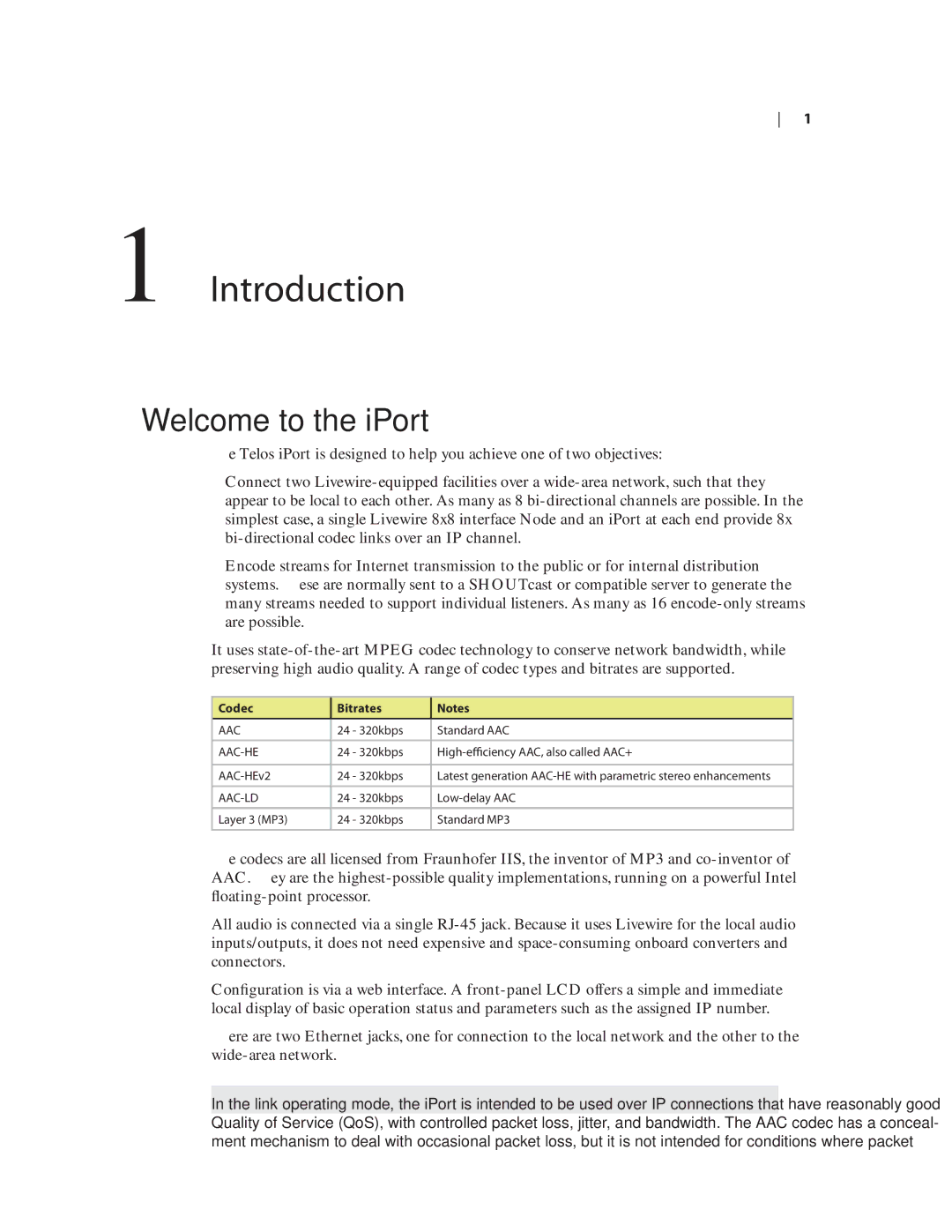
1
1 Introduction
Welcome to the iPort
The Telos iPort is designed to help you achieve one of two objectives:
♦♦ Connect two
♦♦ Encode streams for Internet transmission to the public or for internal distribution systems. These are normally sent to a SHOUTcast or compatible server to generate the many streams needed to support individual listeners. As many as 16
It uses
Codec
Bitrates
Notes
AAC | 24 - 320kbps | Standard AAC |
|
|
|
| 24 - 320kbps | |
|
|
|
24 - 320kbps | Latest generation | |
|
|
|
24 - 320kbps | ||
|
|
|
Layer 3 (MP3) | 24 - 320kbps | Standard MP3 |
|
|
|
The codecs are all licensed from Fraunhofer IIS, the inventor of MP3 and
All audio is connected via a single
Configuration is via a web interface. A
There are two Ethernet jacks, one for connection to the local network and the other to the
In the link operating mode, the iPort is intended to be used over IP connections that have reasonably good Quality of Service (QoS), with controlled packet loss, jitter, and bandwidth. The AAC codec has a conceal- ment mechanism to deal with occasional packet loss, but it is not intended for conditions where packet
